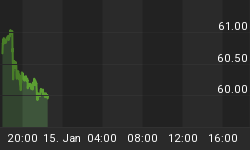Starting in 1986, General Motors Acceptance Corporation began aggregating car loans into asset-backed securities and bonds. Innovations in creative credit were effectually transferred from the mortgage market (mortgage-backed securities) to a host of other financial products.
For a tidy commission, Wall Street firms are happy to establish trust funds to organize, place, sell and administer asset-backed securities. In these instruments, your debt via a car loan represents someone else's asset. Behold the magic of creative credit. Individual car loans are no longer illiquid, nor limited by the constraint of a corporate balance sheet.
The cash flow from any seemingly illiquid revenue stream can be monetized. Almost everything financial - tobacco settlements, future tax revenues, credit card balances, sovereign debt and spreads - can be packed up and sold.
Your fund and pension plan may own some kind of asset-backed security. If these loans and products are off the corporate balance sheet, they must be hidden somewhere on yours.
Last week GM sold a three billion dollar tranche of asset-backed securities. Yield and price is a function not of GM's junk credit rating, but instead the theoretical credit rating of actual car buyers represented in a pool. GM in its death throes may not be very diligent in making sure it writes high quality loans. Profits rely on credit expansion, through the issuance of derivatives.
The SEC thinks that 400 to 800 billion dollars of asset-backed securities may be originated annually. I am going to buy the SEC a dartboard so they can refine this number a bit.
According to the SEC, "there are no disclosure items specifically tailored to asset-backed securities." Trusts are established through some core filings, and performance is tracked to enable the charging of fees and the payout of revenues. Welcome to the wild wild west of spurious accounting, off balance sheet transactions, and arbitrage profits.
Clearly, the SEC cannot cope with this kind of financial complexity. The bureaucrats have started to talk about regulation because something has already blown up. Asset-backed securities go into default all the time, and when they do, leverage comes into play.
Profits are magnified by leverage, but so are losses. These structured financial products were used to expand leverage to unimaginable levels. They do so by hiding risk. Much of this risk remains off balance sheet.
To estimate risk, all you have to do is hire someone with a PhD in quantitative theory. Here is a typical Help Wanted ad:
Major International Investment Bank in NYC is looking for a PhD Level Quant with extensive experience in MBS/ABS Derivatives for a senior position within the Derivative Model Review Group. The successful candidate will review and validate existing risk and trading models for theoretical soundness as well as provide analytic risk support and analysis of the firm's derivative trading business. Candidates must have 3+ years of model validation experience and expertise in prepayment models for fixed rate and adjustable-rate mortgages; prepayment models for asset-backed securities; option-adjusted valuation and risk management tools for MBS, ABS, and CMOs. Candidates must have advanced degree (PhD preferred) in physics, engineering, or math with solid C/C++, VBA or Java programming skills.
We as investors would be better served by simplicity, not by rocket scientists playing financiers.
FOOTNOTE
We are so busy building a financial house of cards that we seem to have forgotten the symbolic importance of rebuilding the actual World Trade Center. The World Trade Center was destroyed because it was a symbol that reflected our theoretical self - an idea; an ideal. That reflection must have been lost; as a people we are unable and unwilling to rebuild symbols lost.
Nationally, we are living the Oscar Wilde story, The Picture of Dorian Gray. Like Gray, we see our own virtuous face unchanged every day in the mirror, while in contrast a gruesome one appears on a canvas growing more hideous with every deed and misstep. It has become too difficult to demonstrate our confidence, show national cohesion, and collectively reject catastrophe.
Instead of rebuilding the World Trade Center, politicians will attempt to use asset-backed securities to build a sports stadium for the 2012 Olympics. Perhaps in this stadium we can send the heathens to the lions of structured finance.
References: http://www.econlib.org/library/Enc/AssetBackedSecurities.html
http://yahoo.reuters.com/financeQuoteCompanyNewsArticle.jhtml?duid=mtfh58962_2005-05- 25_21-22-35_n25423474_newsml
http://www.sec.gov/rules/proposed/33-8419.htm
http://www.jpmorganchase.com/cm/cs?pagename=Chase/Href&urlname=jpmc/ir/financial/abs/cc/circuitcmt
http://www.riskglossary.com/link/collateralized_debt_obligation.htm
http://www.deloitte.com/dtt/cda/doc/content/SecuritizationSrvcsFinal_Nov04.pdf
















